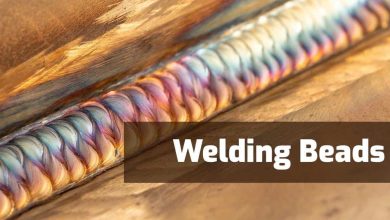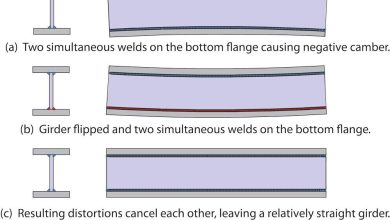Why Is Welding Aluminum Difficult
Welding aluminum is difficult due to several factors.
Firstly, the softness and sensitivity of aluminum make it prone to weak and porous welds, especially if impurities are present.
Additionally, aluminum has a lower melting point and better thermal conductivity than steel, which means there is a smaller window of workability.
Moreover, aluminum lacks visual indications during welding, making it challenging to gauge weld progress.
Special tools and techniques are required to effectively work with aluminum, and the transfer of welding principles between aluminum and steel can be difficult due to their different reactions to heat.
Aluminum also has a thin layer of aluminum oxide that prevents corrosion, but this layer must be thoroughly cleaned before welding.
The choice of filler metal and joint design is crucial to minimize the risk of hot cracking, and the thickness of the material affects the welding approach.
Overall, experience, proper cleaning, and the use of specialized equipment are key to successfully welding aluminum.
Did You Know?
1. Aluminum has a passive oxide layer that forms on its surface, making it resistant to corrosion. However, this oxide layer also poses a challenge for welding because it has a significantly higher melting point than aluminum itself.
2. Welding aluminum requires a considerably higher amount of heat compared to other metals like steel or copper. This is due to aluminum’s high thermal conductivity, which causes heat to quickly dissipate and makes it more difficult for the weld pool to form.
3. To overcome the challenges of welding aluminum, a specialized technique called AC (alternating current) TIG welding is often used. AC TIG welding allows for greater control over the welding environment and the capability to break through the oxide layer, resulting in a stronger weld.
4. Preheating the aluminum material prior to welding can help reduce the difficulty. By raising the temperature of the base metal, the difference in melting points between the aluminum and oxide layer decreases, making it easier for the two materials to merge.
5. Another obstacle in welding aluminum is the potential for thermal distortion. Due to aluminum’s high thermal expansion coefficient, it tends to rapidly expand and contract during the welding process, which can create warping or distortion in the welded joint. Proper techniques such as clamping or jigging can help minimize this effect.
Aluminum’s Softness And Oxidized Layer Pose Welding Challenges
Aluminum is known for its softness, which poses challenges in the welding process. Unlike steel, which has a higher melting point and is more rigid, aluminum has a lower melting point and is relatively soft. This softness makes it difficult to create strong and durable welds. The malleability of aluminum also means that it can deform easily under heat and pressure, resulting in weak and distorted welds.
Another challenge in welding aluminum is its oxidized layer. Aluminum naturally forms a thin layer of aluminum oxide on its surface, which acts as a protective barrier against corrosion or oxidation. However, this layer also acts as an insulator and impedes the flow of heat during the welding process. It must be removed before welding to ensure proper fusion and weld quality.
Impurities And Weak Welds: Risks In Welding Aluminum
Impurities present in the molten state of aluminum can significantly increase the risk of weak and porous welds. Aluminum is highly sensitive to impurities such as oil, grease, dirt, and moisture. Even trace amounts of these impurities can cause gas pockets and porosity in the weld, leading to reduced strength and structural integrity.
To mitigate this risk, thorough cleaning of the aluminum surface is essential before welding. Special cleaning agents or solvents are often used to remove any contaminants that may jeopardize the welding process. Welders must be meticulous in their cleaning procedures to ensure the best possible weld quality.
- Impurities in molten aluminum can result in weak and porous welds.
- Aluminum is highly susceptible to impurities like oil, grease, dirt, and moisture.
- Even small amounts of impurities can lead to gas pockets and porosity in the weld, compromising its strength and integrity.
- Thorough cleaning of the aluminum surface is crucial prior to welding.
- Special cleaning agents or solvents are commonly employed to eliminate contaminants.
- Welders should follow meticulous cleaning procedures to achieve optimal weld quality.
“Impurities present in the molten state of aluminum can significantly increase the risk of weak and porous welds.”
Lower Melting Point And Thermal Conductivity: A Smaller Window Of Workability
One of the challenges in welding aluminum is its lower melting point compared to other metals like steel. Aluminum has a much lower melting temperature, which means that welders need to carefully control the heat input during the welding process. Excessive heat can cause excessive melting and distortion, while insufficient heat may result in incomplete fusion and weak welds.
Moreover, aluminum has excellent thermal conductivity, which means it absorbs and dissipates heat quickly. This rapid heat transfer makes it more difficult to maintain a steady and consistent temperature during welding, reducing the working time window. Welders must have a high level of skill and experience to effectively manage the heat input and achieve proper weld penetration without compromising the integrity of the aluminum.
Gauging Weld Progress: Lack Of Visual Indications In Aluminum Welding
One of the unique challenges in welding aluminum is the lack of visual indications during the welding process. Unlike steel, which often exhibits visible changes in color and behavior as it approaches the melting point, aluminum does not undergo distinct color changes during welding. This lack of visual feedback makes it challenging for welders to gauge the progress and quality of their welds.
Welders must rely on other indicators, such as their experience and knowledge of the welding parameters, to ensure proper weld penetration and fusion. Monitoring the sound, feel, and behavior of the molten aluminum can provide valuable insights into the state of the weld. However, this requires a high level of skill and expertise, making aluminum welding a more demanding task.
- Lack of visual feedback during aluminum welding
- Importance of relying on other indicators like experience and knowledge
- Monitoring sound, feel, and behavior of molten aluminum
- High level of skill and expertise required.
Special Tools And Techniques: Necessities For Working With Aluminum
Due to the unique properties of aluminum, special tools and techniques are necessary for successful welding. The softness and malleability of aluminum require different welding processes, equipment, and consumables compared to steel welding.
TIG (Tungsten Inert Gas) welding and MIG (Metal Inert Gas) welding are the preferred methods for aluminum welding. TIG welding allows precise control of heat, while MIG welding is faster and more suitable for thicker materials. AC (Alternating Current) TIG welding is often recommended for aluminum as it helps clean the oxide layer and ensures proper heat penetration.
Using the correct filler metal is crucial, as it affects the strength and integrity of the weld. There are four aluminum alloy families to choose from, each with its own unique properties and applications. Selecting the appropriate filler metal based on the intended use of the weld is essential to achieve optimal results.
In addition, specialized welding techniques must be employed, such as the stringer bead welding technique, which allows for a greater buildup of heat and better weld penetration. Welders must also be mindful of their welding angles, as joint design and angles play a critical role in overcoming heat sinking issues and achieving strong and durable welds.
Overall, welding aluminum requires a combination of skill, expertise, and access to the right tools and techniques. Due to its softness, sensitivity, and unique properties, aluminum presents distinct challenges that must be carefully addressed to achieve high-quality welds.
Check this out:
Frequently Asked Questions
What are the difficulties in welding aluminium?
Welding aluminium presents several challenges due to its high thermal conductivity and susceptibility to porosity. The rapid dissipation of heat in aluminium makes it difficult to maintain optimal welding conditions, as the metal quickly cools down. This requires precise control over the welding parameters to ensure proper fusion and prevent defects in the weld. Additionally, the issue of porosity is a common concern in aluminium welding, as the metal is more prone to trapping gas during the welding process. Managing these difficulties requires skilled techniques and precise control of factors such as heat input and shielding gases to achieve high-quality aluminium welds.
Why is aluminum harder to weld than steel?
Aluminum is more challenging to weld than steel due to its heat conductivity properties. Unlike carbon steel, aluminum has a higher ability to pull heat away from the weld zone and redistribute it throughout the material. This characteristic makes aluminum less forgiving to errors during welding, particularly when dealing with thin materials. Excessive heat can easily cause distortion or burn-through on the aluminum surface, requiring precise control and a deeper understanding of the welding process.
Is aluminum harder to weld?
Welding aluminum does present its own set of challenges compared to welding steel. One major factor is the lower melting point of aluminum, which requires more precise heat control during the welding process. Its high thermal conductivity also means that heat dissipates quickly, making it harder to maintain consistent temperatures. Additionally, aluminum forms an oxide layer when exposed to air, which can interfere with the welding process and lead to weaker welds. However, with proper technique and training, skilled welders can achieve strong and reliable aluminum welds.
Why is it difficult to weld aluminium Mcq?
Welding aluminum poses challenges due to the impurities in shielding gases and the presence of gases in the aluminum itself. The impurity in shielding gases makes oxygen and hydrogen available to the molten weld pool, which can cause defects in the weld. Additionally, gases are dissolved in the aluminum, as well as tungsten inclusion during GTA welding, further complicating the welding process. These factors make it difficult to maintain the desired quality and integrity of the weld when working with aluminum.


